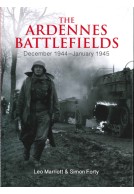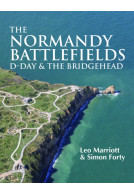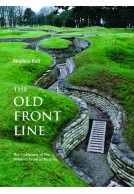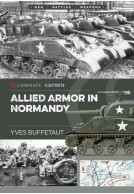The Ardennes Battlefields (Hardback)
December 1944–January 1945
Imprint: Casemate Publishers
Series: WWII Historic Battlefields
Pages: 192
Illustrations: 350
ISBN: 9781612005348
Published: 10th November 2017
(click here for international delivery rates)
Order within the next 6 hours, 13 minutes to get your order processed the next working day!
Need a currency converter? Check XE.com for live rates
Just after its seventieth anniversary, the Battle of the Bulge has lost none of its impact. The largest battle fought by US troops on the continent of Europe started in a surprise attack on December 16, 1944, by four German armies, spearheaded by the cream of the German Panzer forces. Under the cover of bad weather and heavy snow, Hitler’s last roll of the dice was intended to retake Antwerp, split the Allies, divide their political leadership, and force peace in the West, thus allowing the German forces to concentrate on defeating the Red Army. Strategic pipedream or not, the attack was furious and drained the Eastern Front of reinforcements: 12 armored and 29 infantry divisions, some 2,000 tanks and assault guns—mainly PzKpfw IVs (800), Panthers (750) and Tigers (250 including some of the new King Tigers)— spearheaded the assault, which smashed into the American First and Ninth Armies.
Near-complete surprise was achieved thanks to a combination of Allied overconfidence, preoccupation with offensive plans, and poor reconnaissance. The Germans attacked where least expected—the forested Ardennes—a weakly defended section of the Allied line, taking advantage of the weather conditions, which grounded the Allies’ overwhelmingly superior air forces. The Allied response was magnificent. Initial reverses brought out the best of Eisenhower’s armies, which fought with determination and grit against the enemy and the elements. The harsh battles are best summed up by the defense of the northern shoulder around the Elsenborn Ridge, the battle for St. Vith, and in the south the siege of Bastogne, where the town’s commander, Gen. McAuliffe, rejected German calls for surrender with the pithy reply: “Nuts.”
Within ten days the German attack had been nullified. Patton, at the time planning an attack further south, wheeled his Third Army round in a brilliant maneuver that relieved Bastogne and set up a counterattack which would drive the Germans back behind the Rhine. The Ardennes Battlefields includes details of what can be seen on the ground today—hardware, memorials, museums, and cemeteries—using a mixture of media to provide an overview of the campaign: maps old and new highlight what has survived and what hasn’t; then and now photography allows fascinating comparisons with the images taken at the time; aerial photos give another angle to the story. The fifth book by Leo Marriott and Simon Forty provides a different perspective to this crucial battlefield.
There are no reviews for this book. Register or Login now and you can be the first to post a review!
About Simon Forty
Simon Forty was educated in Dorset and the north of England before reading history at London University’s School of Slavonic and East European Studies. He has been involved in publishing since the mid-1970s, first as editor and latterly as author.
Son of author and RAC Tank Museum curator George Forty, Simon and his brother Jonathan have continued the family tradition, writing mainly on historical and military subjects including books on Hadrian's Wall, the Napoleonic wars and the two world wars, often in collaboration. Simon's latest book, published by Historic England, is D-Day UK: 100 Locations in Britain; Jonathan's Heavyweights: The Military Use of Massive Weapons. They are also co-authors of Tank Warfare 1939-1945.


























